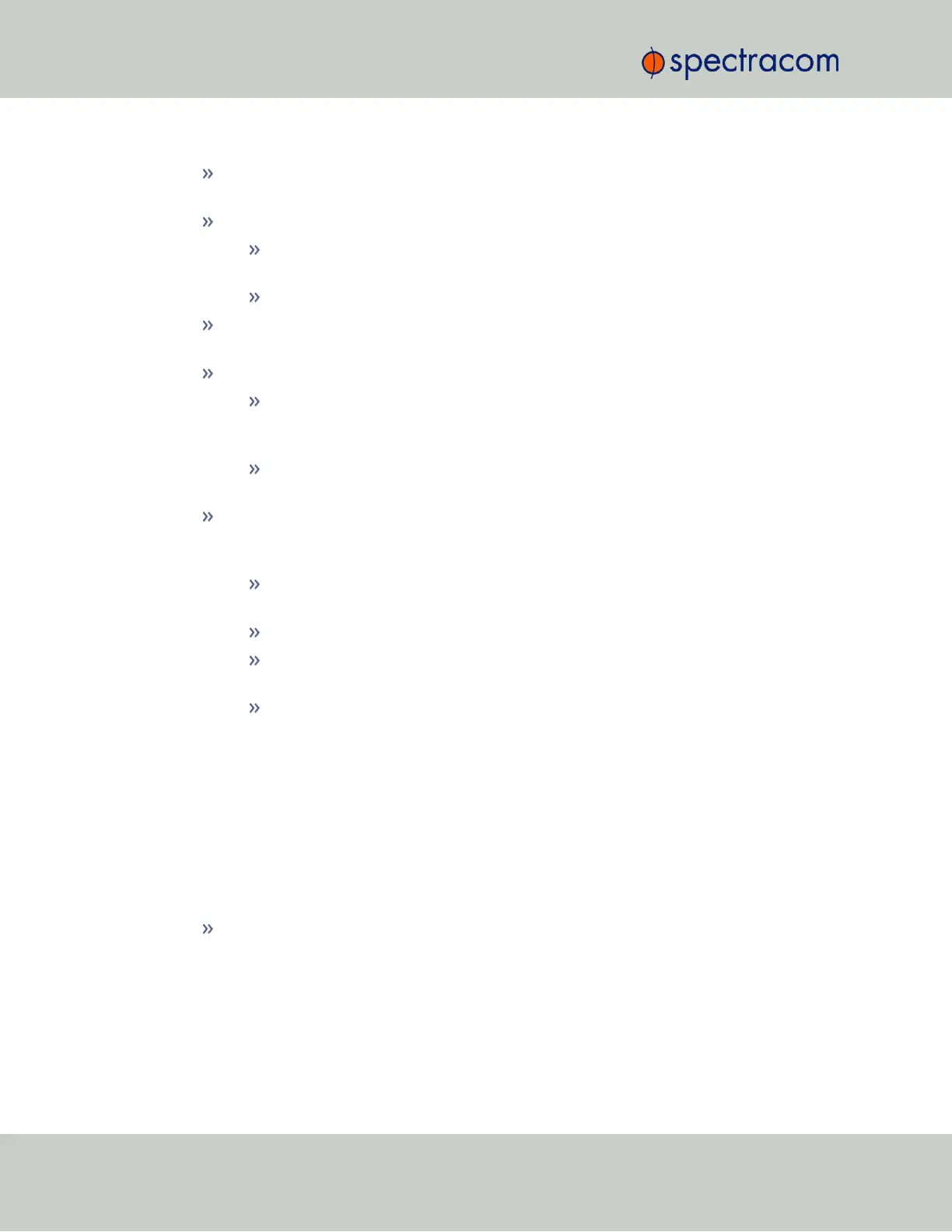Level of Single-ended Signals: 10V or 5V will be indicated for the TOD 1 and 1PPS Out-
put.
Generate Time Fault Discrete (TFD):
Enabled: The TFD signal uses the “Threshold to activate” value to provide the level
of TFD.
Disabled: The TFD signal is always valid.
Threshold to activate TFD: If the TFD is activated, indicates the TFOM value threshold.
Below this value, the TFD is high, otherwise the TFD is low.
Generate Bit Synchronization (BS):
Enabled: The second STANAG signal (TOD 2) is used to send the BS (Bit Stream)
signal used with STANAG 4430-STM. When BS is active, the configuration of
TOD 2 is superseded and only used for BS.
Disabled: The second STANAG signal (TOD 2) can be used to send an inde-
pendent TOD.
Timescale: Indicates the time base for the incoming time code data. The entered Times-
cale is used by the system to convert the time in the incoming data stream to UTC time for
use by the System Time. The available choices are:
UTC—Coordinated Universal Time ("temps universel coordonné"), also referred
to as ZULU time
TAI—Temps Atomique International
GPS—The raw GPS time as transmitted by the GNSS satellites (as of July, 2015,
this is 17 seconds ahead of UTC time).
A local clock set up through the Time Management Page—Refer to "The Time Man-
agement Screen" on page146 for more information on how to configure and
read the System Time. Local timescale allows a Local Clock to apply a time offset
for Time Zone and DST correction.
The incoming input time information may be provided as local time, but System Time may be
configured as UTC time, so internal computations need to be performed. With the Timescale
field set to “Local”, select the name of a previously created Local Clock. The Time Zone and DST
rules, as configured in the Local Clock will be applied to the front panel time display. Refer to
for more information on Local Clocks.
For each Time of Day the following settings are displayed:
Signature Control: Indicates when the signal is present. This function allows the mod-
ulation to stop under certain conditions, see "Signature Control" on page141.
434 SecureSync User Reference Guide
APPENDIX

